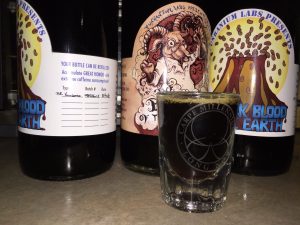Let’s begin with the improvement you can’t see or, rather, won’t see anymore. At some point a “helpful upgrade” was done by BigCommerce who provide the architecture and servers for the store side of Funranium Labs. In the course of this upgrade, they managed to break the 3rd party SSL chain and depending on the browser you received a warning letting you know that my store was as suspect as a Moldovan merchant bank and to be avoided at all costs. It took far too long to figure out exactly how they broke it and then longer to determine how to fix it correctly with them. Needless to say, I have received a fresh customer service lesson which I will file away for how to treat others better. If I’ve done everything right, you won’t be getting nasty red flags anymore…at least until the next “upgrade“.
In the near future, I have some travel coming up which is going to make production schedules a little screwy. This weekend, I’m headed up to Portland to celebrate a friend’s birthday, which means for those of you who want go juice for Burning Man BBotE the schedule’s a little tight. Meanwhile, while Burning Man is going on, I will be fleeing to the Sierras to collect two national parks I haven’t been to yet, Kings Canyon & Sequoia. It is very important to give me camping hermitage time or I start getting stabby. And finally, there will be a longer service interruption as I go to Boston on Sept 20th to celebrate the wedding of Test Subjects Vision Science. I will then be fulfilling a dream I’ve had since I was 20 or so when my grandma did it and coming home via cross-country Amtrak trip, with a couple stops along the way. The coffee engines will fire up again after that trip on Oct 5th. All that said, I’m not going to turn off ordering, but I’m going to ask your patience as listings may zero out on you and production windows may go longer or shorter than normal as I try to crank as much out as possible.
Now, on to new BBotE offerings and me rambling about history, war, and agronomy.
As previously mentioned, Guatemala Nueva Vinas is being retired until next year when, hopefully, the next crop comes in and is up to snuff. In the meantime, I have identified a Guatemala Antigua that I’ve enjoyed which has an impressive citrus brightness and dark chocolate flavor that, weirdly, reminds me of Pepperidge Farms lemon Milano cookies. My normal tasting crowd ran about a 50/50 split of “Coffee and lemons do not go together” and “Holy shit, this is like that weird Panama you make that tastes like blueberries. Are you gonna make more?” There was a universal opinion that the addition of pretty much any alcohol to it was a winner. Do not take this as a challenge to make BBotE & cynar cocktails.
Lastly, Test Subject Nimby, proprietor of Blackstar Group, recently went on vacation to Puerto Rico and asked if there was anything I’d like him to bring back. I instead sent him on a mission to see if he could find a worthwhile coffee for me to play with. You see, I keep cursing the name of United Fruit because in the course of setting up the banana republics around the world, even in places where they did the least political damage, their market distorting effects destroyed the coffee plantations that had been there for generations, all in the name of bananas & pineapples. After my trip to Hawaii, where I sampled as much coffee as I could stand, I started wondering about the coffee production in the Spanish-American War acquisitions. In Guam, the coffee crops are almost gone, long ago replaced by bananas, importing most of the coffee the consume from Sumatra. In the Philippines, their coffee production never really recovered from an awful blight at the end of the 19th century that, again, made bananas look appealing. Production has resumed there, but the Philippines are net importers of coffee by a fair margin and most of their domestic crops are robusta.
Which brings us to Puerto Rico. Coffee production in Puerto Rico never really stopped. It was never as large scale production like Haiti, which supplied a quarter of the world’s supply at one time. Once the filthy Yanqui showed up, the production decreased as work moved to sugar cane instead. Because cane and coffee use very different terrain, the crop transition didn’t destroy the coffee plantations like happened for bananas, so much as them being abandoned or only being used for low key, local production. Once sugar beets displaced sugar cane as the primary source for everyone’s favorite diabetes fuel, they started firing up the the old coffee plantations again.

That said, most of Puerto Rico’s production remains for local consumption. Puerto Rico has struck me with proud, just this side arrogant, pride of place for their their food. Each valley has the best coffee, everyone’s grandma has the best coquito recipe; it’s one of the things I miss about living around lots of Puerto Ricans. The Yaucono that Test Subject Nimby sent me is a dark roast which generally gives me pause. Dark roasts tend to leave very little of the original coffee’s character which is why there’s so few of them as BBotE, I want to actually taste something other than the roast. However, I got a treat every bit as good as my surprise with the Peru Salkanty here, the taste was like the smell of opening a cedar chest and a cup of hot cocoa. Considering Caribbean fun times, I decided to try a rum addition rather than vodka and a 6:2:1 hot water to Yaucono to dark rum mix is a goddamn treat.
Both of these go on the Limited Run line up and I’m happy for it.